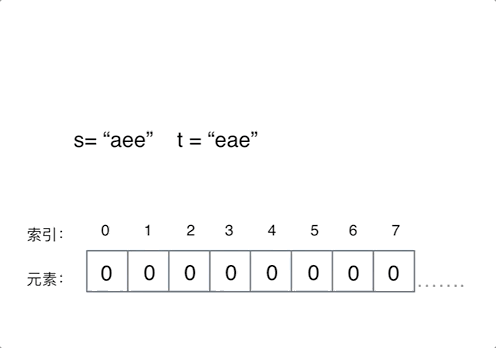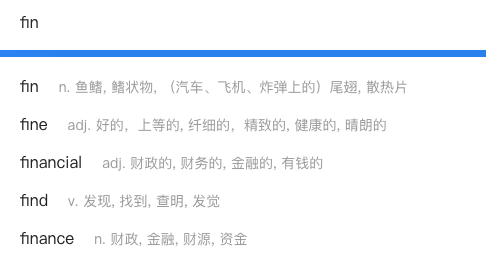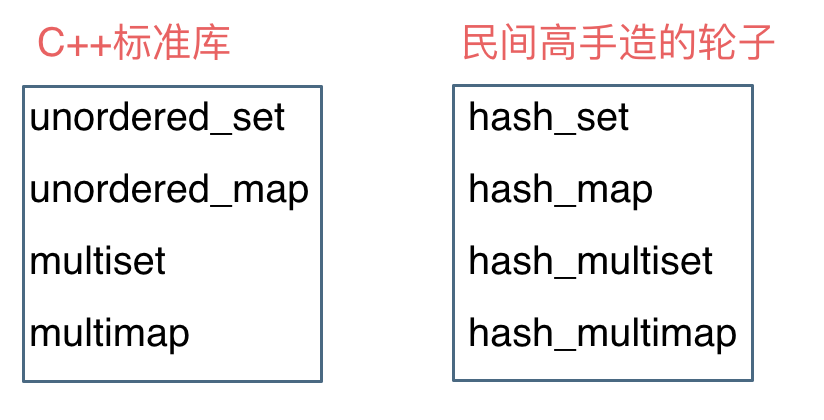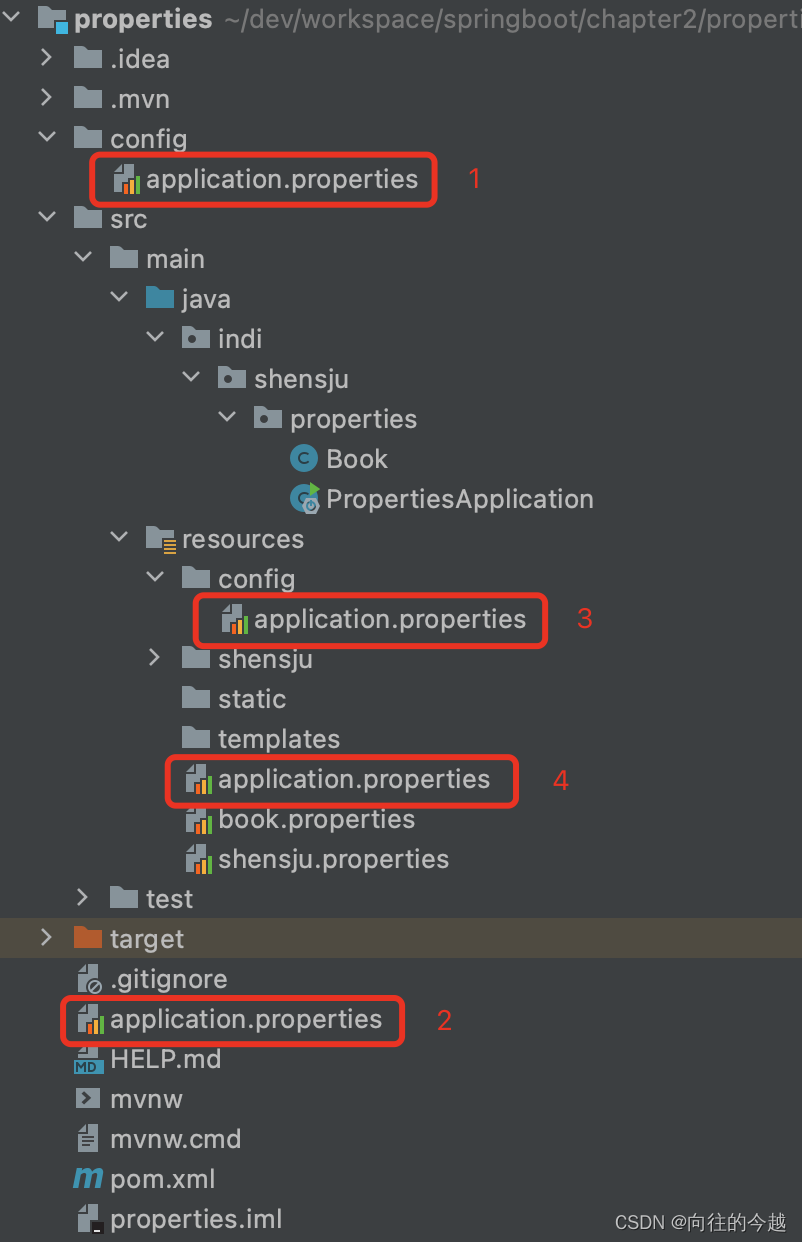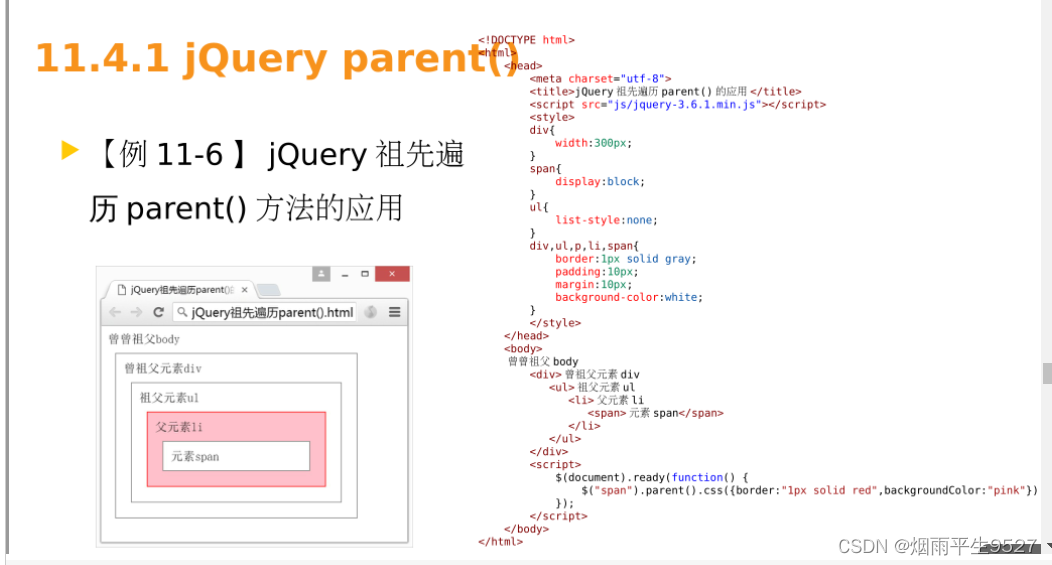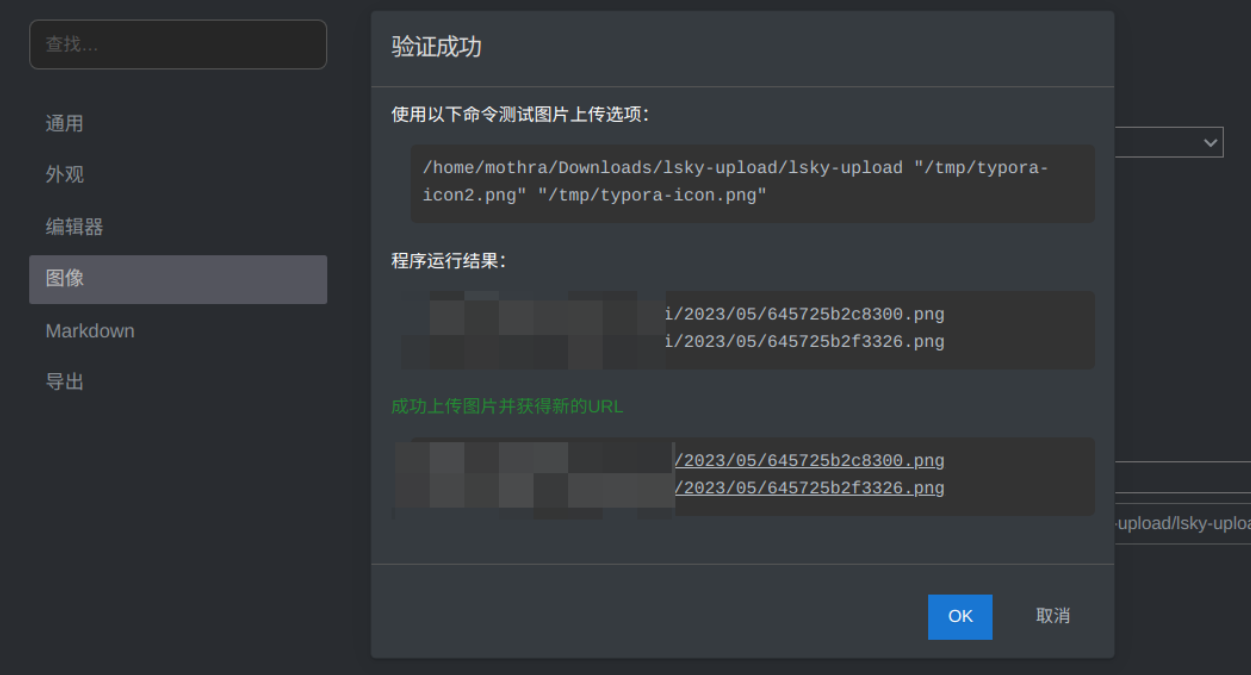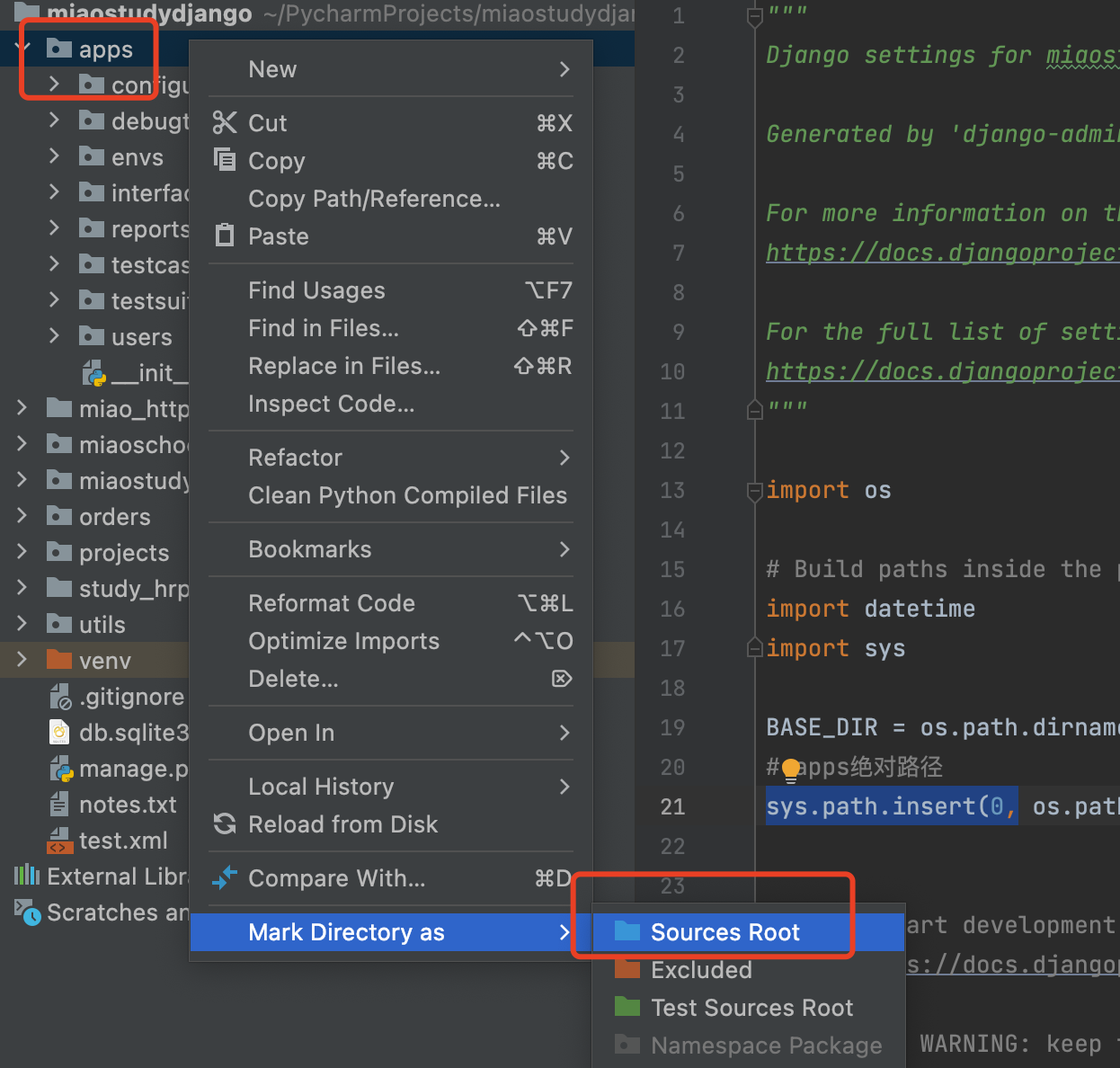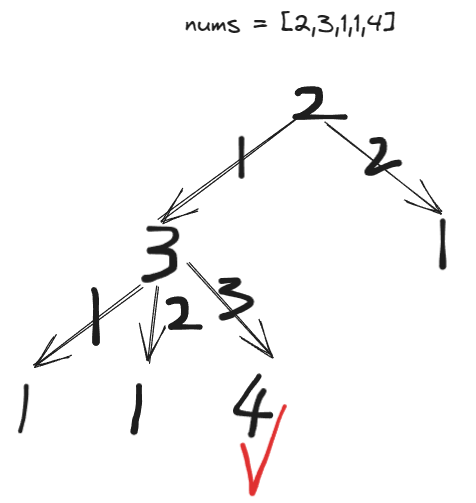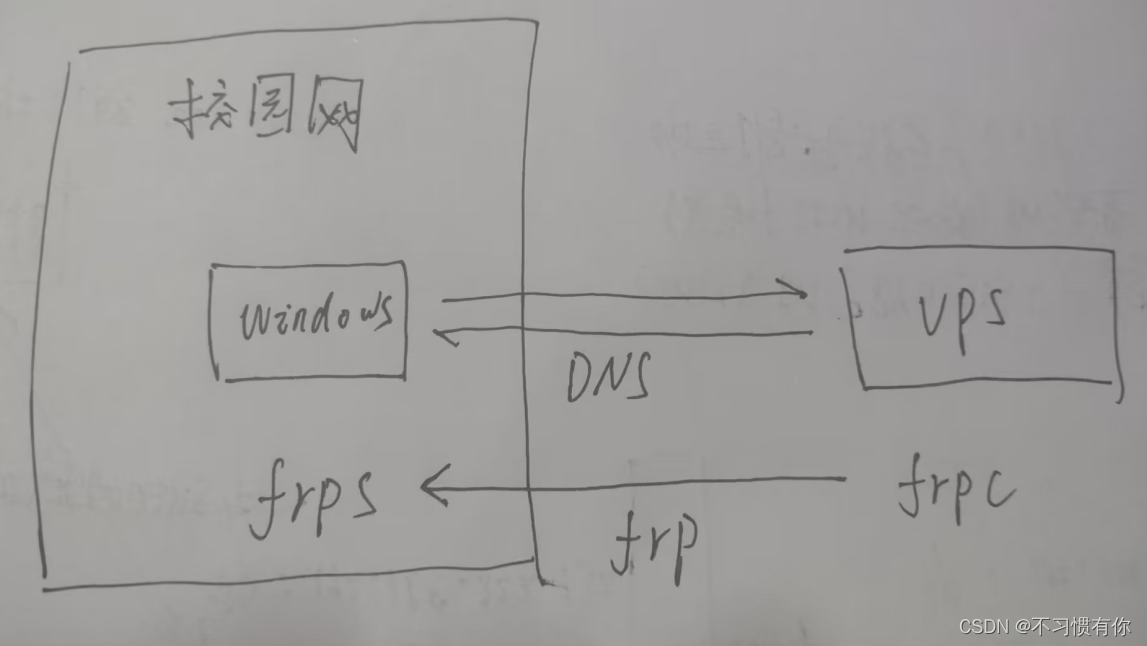找到有没有环已经很不容易了,还要让我找到环的入口?
142.环形链表II
力扣题目链接
题意:
给定一个链表,返回链表开始入环的第一个节点。 如果链表无环,则返回 null。
为了表示给定链表中的环,使用整数 pos 来表示链表尾连接到链表中的位置(索引从 0 开始)。 如果 pos 是 -1,则在该链表中没有环。
说明:不允许修改给定的链表。
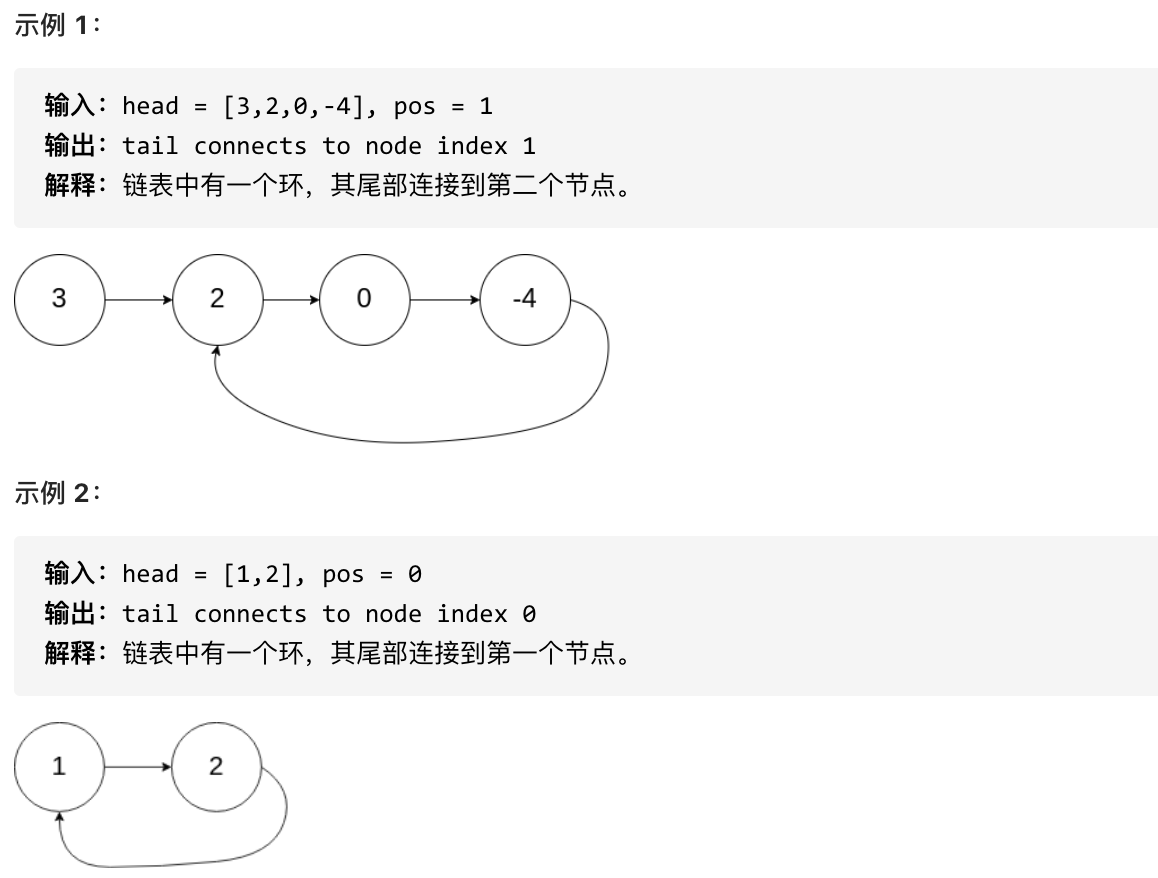
思路
这道题目,不仅考察对链表的操作,而且还需要一些数学运算。
主要考察两知识点:
- 判断链表是否环
- 如果有环,如何找到这个环的入口
判断链表是否有环
可以使用快慢指针法,分别定义 fast 和 slow 指针,从头结点出发,fast指针每次移动两个节点,slow指针每次移动一个节点,如果 fast 和 slow指针在途中相遇 ,说明这个链表有环。
为什么fast 走两个节点,slow走一个节点,有环的话,一定会在环内相遇呢,而不是永远的错开呢
首先第一点:fast指针一定先进入环中,如果fast指针和slow指针相遇的话,一定是在环中相遇,这是毋庸置疑的。
那么来看一下,为什么fast指针和slow指针一定会相遇呢?
可以画一个环,然后让 fast指针在任意一个节点开始追赶slow指针。
会发现最终都是这种情况, 如下图:

fast和slow各自再走一步, fast和slow就相遇了
这是因为fast是走两步,slow是走一步,其实相对于slow来说,fast是一个节点一个节点的靠近slow的,所以fast一定可以和slow重合。
动画如下:
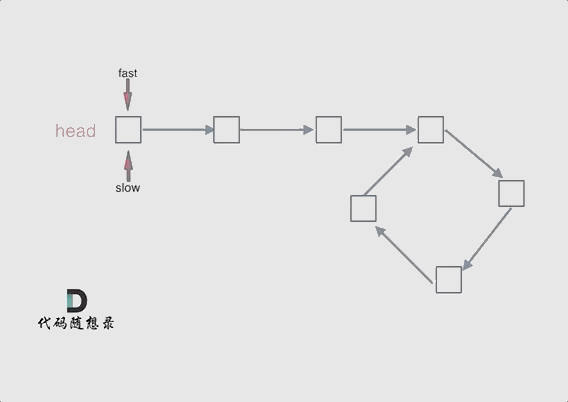
如果有环,如何找到这个环的入口
此时已经可以判断链表是否有环了,那么接下来要找这个环的入口了。
假设从头结点到环形入口节点 的节点数为x。
环形入口节点到 fast指针与slow指针相遇节点 节点数为y。
从相遇节点 再到环形入口节点节点数为 z。 如图所示:

那么相遇时:
slow指针走过的节点数为: x + y,
fast指针走过的节点数: x + y + n (y + z),n为fast指针在环内走了n圈才遇到slow指针, (y+z)为 一圈内节点的个数A。
因为fast指针是一步走两个节点,slow指针一步走一个节点, 所以 fast指针走过的节点数 = slow指针走过的节点数 * 2:
(x + y) * 2 = x + y + n (y + z)
两边消掉一个(x+y): x + y = n (y + z)
因为要找环形的入口,那么要求的是x,因为x表示 头结点到 环形入口节点的的距离。
所以要求x ,将x单独放在左面:x = n (y + z) - y ,
再从n(y+z)中提出一个 (y+z)来,整理公式之后为如下公式:x = (n - 1) (y + z) + z 注意这里n一定是大于等于1的,因为 fast指针至少要多走一圈才能相遇slow指针。
这个公式说明什么呢?
先拿n为1的情况来举例,意味着fast指针在环形里转了一圈之后,就遇到了 slow指针了。
当 n为1的时候,公式就化解为 x = z,
这就意味着,从头结点出发一个指针,从相遇节点 也出发一个指针,这两个指针每次只走一个节点, 那么当这两个指针相遇的时候就是 环形入口的节点。
也就是在相遇节点处,定义一个指针index1,在头结点处定一个指针index2。
让index1和index2同时移动,每次移动一个节点, 那么他们相遇的地方就是 环形入口的节点。
动画如下:

那么 n如果大于1是什么情况呢,就是fast指针在环形转n圈之后才遇到 slow指针。
其实这种情况和n为1的时候 效果是一样的,一样可以通过这个方法找到 环形的入口节点,只不过,index1 指针在环里 多转了(n-1)圈,然后再遇到index2,相遇点依然是环形的入口节点。
代码如下:
/**
* Definition for singly-linked list.
* struct ListNode {
* int val;
* ListNode *next;
* ListNode(int x) : val(x), next(NULL) {}
* };
*/
class Solution {
public:
ListNode *detectCycle(ListNode *head) {
ListNode* fast = head;
ListNode* slow = head;
while(fast != NULL && fast->next != NULL) {
slow = slow->next;
fast = fast->next->next;
// 快慢指针相遇,此时从head 和 相遇点,同时查找直至相遇
if (slow == fast) {
ListNode* index1 = fast;
ListNode* index2 = head;
while (index1 != index2) {
index1 = index1->next;
index2 = index2->next;
}
return index2; // 返回环的入口
}
}
return NULL;
}
};
补充
在推理过程中,大家可能有一个疑问就是:为什么第一次在环中相遇,slow的 步数 是 x+y 而不是 x + 若干环的长度 + y 呢?
即文章链表:环找到了,那入口呢?中如下的地方:

首先slow进环的时候,fast一定是先进环来了。
如果slow进环入口,fast也在环入口,那么把这个环展开成直线,就是如下图的样子:
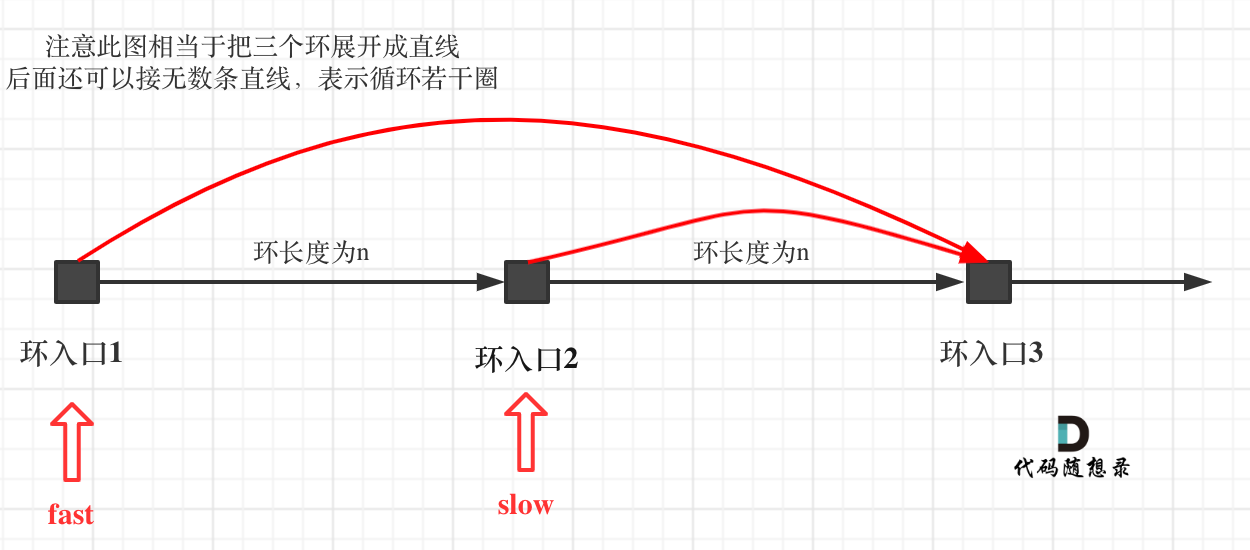
可以看出如果slow 和 fast同时在环入口开始走,一定会在环入口3相遇,slow走了一圈,fast走了两圈。
重点来了,slow进环的时候,fast一定是在环的任意一个位置,如图:
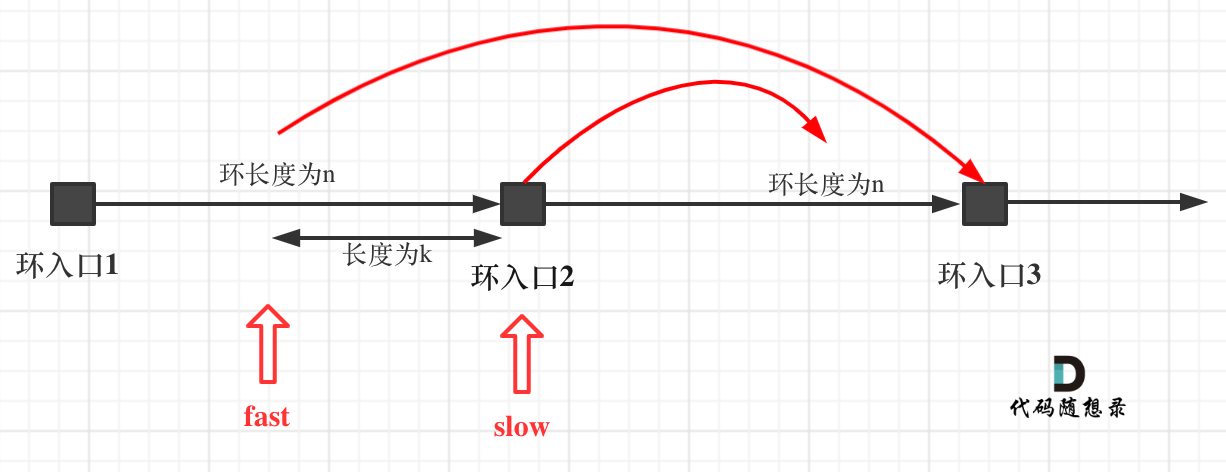
那么fast指针走到环入口3的时候,已经走了k + n 个节点,slow相应的应该走了(k + n) / 2 个节点。
因为k是小于n的(图中可以看出),所以(k + n) / 2 一定小于n。
也就是说slow一定没有走到环入口3,而fast已经到环入口3了。
这说明什么呢?
在slow开始走的那一环已经和fast相遇了。
那有同学又说了,为什么fast不能跳过去呢? 在刚刚已经说过一次了,fast相对于slow是一次移动一个节点,所以不可能跳过去。
好了,这次把为什么第一次在环中相遇,slow的 步数 是 x+y 而不是 x + 若干环的长度 + y ,用数学推理了一下,算是对链表:环找到了,那入口呢?的补充。
总结
这次可以说把环形链表这道题目的各个细节,完完整整的证明了一遍,说这是全网最详细讲解不为过吧,哈哈。
其他语言版本
Java:
public class Solution {
public ListNode detectCycle(ListNode head) {
ListNode slow = head;
ListNode fast = head;
while (fast != null && fast.next != null) {
slow = slow.next;
fast = fast.next.next;
if (slow == fast) {// 有环
ListNode index1 = fast;
ListNode index2 = head;
// 两个指针,从头结点和相遇结点,各走一步,直到相遇,相遇点即为环入口
while (index1 != index2) {
index1 = index1.next;
index2 = index2.next;
}
return index1;
}
}
return null;
}
}
Python:
class Solution:
def detectCycle(self, head: ListNode) -> ListNode:
slow, fast = head, head
while fast and fast.next:
slow = slow.next
fast = fast.next.next
# 如果相遇
if slow == fast:
p = head
q = slow
while p!=q:
p = p.next
q = q.next
#你也可以return q
return p
return None
Go:
func detectCycle(head *ListNode) *ListNode {
slow, fast := head, head
for fast != nil && fast.Next != nil {
slow = slow.Next
fast = fast.Next.Next
if slow == fast {
for slow != head {
slow = slow.Next
head = head.Next
}
return head
}
}
return nil
}
javaScript
// 两种循环实现方式
/**
* @param {ListNode} head
* @return {ListNode}
*/
// 先判断是否是环形链表
var detectCycle = function(head) {
if(!head || !head.next) return null;
let slow =head.next, fast = head.next.next;
while(fast && fast.next && fast!== slow) {
slow = slow.next;
fast = fast.next.next;
}
if(!fast || !fast.next ) return null;
slow = head;
while (fast !== slow) {
slow = slow.next;
fast = fast.next;
}
return slow;
};
var detectCycle = function(head) {
if(!head || !head.next) return null;
let slow =head.next, fast = head.next.next;
while(fast && fast.next) {
slow = slow.next;
fast = fast.next.next;
if(fast == slow) {
slow = head;
while (fast !== slow) {
slow = slow.next;
fast = fast.next;
}
return slow;
}
}
return null;
};
TypeScript:
function detectCycle(head: ListNode | null): ListNode | null {
let slowNode: ListNode | null = head,
fastNode: ListNode | null = head;
while (fastNode !== null && fastNode.next !== null) {
slowNode = slowNode!.next;
fastNode = fastNode.next.next;
if (slowNode === fastNode) {
slowNode = head;
while (slowNode !== fastNode) {
slowNode = slowNode!.next;
fastNode = fastNode!.next;
}
return slowNode;
}
}
return null;
};
Swift:
class Solution {
func detectCycle(_ head: ListNode?) -> ListNode? {
var slow: ListNode? = head
var fast: ListNode? = head
while fast != nil && fast?.next != nil {
slow = slow?.next
fast = fast?.next?.next
if slow == fast {
// 环内相遇
var list1: ListNode? = slow
var list2: ListNode? = head
while list1 != list2 {
list1 = list1?.next
list2 = list2?.next
}
return list2
}
}
return nil
}
}
extension ListNode: Equatable {
public func hash(into hasher: inout Hasher) {
hasher.combine(val)
hasher.combine(ObjectIdentifier(self))
}
public static func == (lhs: ListNode, rhs: ListNode) -> Bool {
return lhs === rhs
}
}
C:
ListNode *detectCycle(ListNode *head) {
ListNode *fast = head, *slow = head;
while (fast && fast->next) {
// 这里判断两个指针是否相等,所以移位操作放在前面
slow = slow->next;
fast = fast->next->next;
if (slow == fast) { // 相交,开始找环形入口:分别从头部和从交点出发,找到相遇的点就是环形入口
ListNode *f = fast, *h = head;
while (f != h) f = f->next, h = h->next;
return h;
}
}
return NULL;
}
Scala:
object Solution {
def detectCycle(head: ListNode): ListNode = {
var fast = head // 快指针
var slow = head // 慢指针
while (fast != null && fast.next != null) {
fast = fast.next.next // 快指针一次走两步
slow = slow.next // 慢指针一次走一步
// 如果相遇,fast快指针回到头
if (fast == slow) {
fast = head
// 两个指针一步一步的走,第一次相遇的节点必是入环节点
while (fast != slow) {
fast = fast.next
slow = slow.next
}
return fast
}
}
// 如果fast指向空值,必然无环返回null
null
}
}
